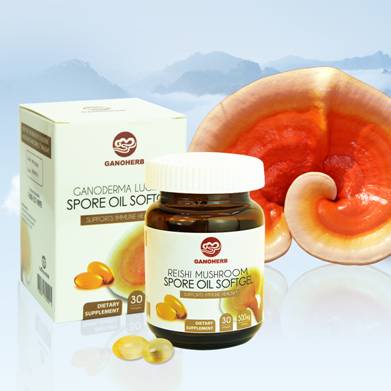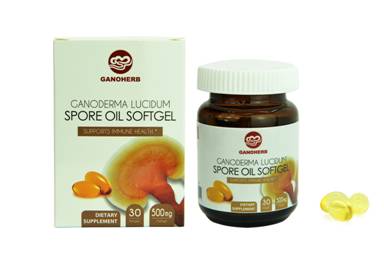First, seed breeding facilities
You can use the nursery facilities such as real oysters and gums, and you can also use ready-made shrimp, crab, and shellfish nursery nurseries. According to experiments, in the seaweed nursery, where the water depth is only 40 centimeters, a good seeding effect can also be obtained.
Second, seed cultivation
1. Stocking density
The newly hatched larvae are bent and sink to the bottom of the pool. After a period of time, they gradually float up, do intermittent swimming, and gradually spread to the pool. The stocking density of newly hatched larvae can be controlled at 10,000 depending on the pond and culture conditions. About cubic meters.
2. Water temperature
The temperature of the pool water during cultivation generally varies with the temperature and temperature of the natural seawater. If there are heating conditions, in order to accelerate the growth and development of larvae, warming methods can be used. According to experiments, the accumulated temperature required for larvae raised to 22 mm at different water temperatures is 619 to 627°C when the average water temperature is 14.4°C to 14.6°C, and 462°C when the average water temperature is 18.5°C. The specific method of raising the temperature is to grasp the daily increase no more than 1°C, reach the optimum temperature or the desired temperature, and then keep stable until the nursery is over.
3. Inflatable
In general, an aerated stone is laid around every 2 square meters and continuously inflated; the amount of gas is adjusted according to the larval development period. The pre-micro-inflation gradually increases the air volume as the larvae grow.
4. Suction
After the larvae have a certain swimming ability, use a dirt suction device to remove the dead fish and other contaminants from the bottom of the pool to reduce water pollution. After 3 days, start feeding and clear the dirt once a day, and increase the number of times of decontamination depending on the water quality.
5. Change water
Cultivating seawater is the use of natural seawater after screen filtration or sand filtration. At the beginning of the time, micro-flowing water, with the growth of fish and the increase of feeding amount, gradually increase the amount of water flow, changing 1 to 2 ranges of water daily, and increasing it to 3 to 4 ranges in the later period, and depending on the quality of water In 3 days to 5 days, change the water or pour the pool once.
6. Water quality factor control
Dissolved oxygen is usually kept above 5 ml/l and the pH is stabilized at 7.8-8.6. If the surface light intensity does not allow the algae to multiply in the pool water, it is not necessary to properly increase the light.
7. Feeding
Chlorella vaccinate was inoculated at 300,000 cells/ml to 400,000 cells/ml at the same time as the fish entered the nursery pond. Chlorella was added every day to maintain this concentration. On the 3rd day after the larva output, rotifers were started to be fed, and the density was about 3/ml to 5/ml. The rotifer is a well-opened bait for Xuan Pingyu. The rotifer is generally about 200 microns, while the larvae have a crack of 400 microns. The larvae are able to feed on their own initiative. On the 6th to 7th days, Artemia nauplii was added and the amount fed was kept at 0.1/ml to 0.2/ml, and the amount of rotifer feeding was gradually reduced to keep it at 1/ml to 2 /ml. Artemia nauplii is an ideal supplementary diet for larvae after 6 days, and it is easy to batch hatch. The feeding rate of larvae is high. However, since the nutrition of Artemia larvae is not complete enough for marine larvae, nutrient fortification is usually required before feeding. The method consists of cultivating newly hatched Artemia nauplii for 6 hours to 12 hours using emulsified fish oil, and then feeding the fish fry. At present, the cost of Artemia eggs is relatively high, but the appropriate length of Artemia can increase the survival rate of seedlings. On the 14th day, when the larvae were about 7.5 mm in length, except for Artemia nauplii 0.2 to 0.35/ml, the amount of feed was adjusted appropriately according to the daily yield. From the 30th day to the 35th day, the larvae had a total length of 15 mm to 20 mm and began to cast fish, shrimp, and other dead baits. After the 40th day, the larvae become juveniles. When the total length of the larvae is more than 22 mm and they can fully feed on the dead bait, they can proceed to prepare for the juvenile fish cultivation.
Third, food intake
To achieve planned production and quantitative feeding, the size and quantity of fish fry and the daily food intake of each fish must be mastered. Under experimental conditions, it is relatively easy to determine the food intake of fry, but there is a certain degree of difficulty in production, because for each nursery pond, not only the existing number of fish fry in ponds, but also the daily food intake of fry in different developmental stages should be considered. , Also consider the edible density of bait and the loss rate of bait caused by exchange of water. During the nursery period, the feeding amount of each seedling was 2.706104 rotifers and 7.029104 Artemia larvae.
IV. Growth and survival rate
The production of fish fry in accordance with specifications on a large scale is the basic goal of industrialized nursery. However, the growth of fish varies with different fish species, different developmental stages, and even different production conditions. Even if the same batch of eggs are at different densities, even individuals reared in the same pool will produce certain differences. The growth of the early fish at the early stages of development is approximately 20 days after hatching. Before this, the fry grows slowly. After 20 days, the body enters the high-speed growth phase after reaching 10 millimeters, and the daily growth rate is almost the same as the former. Times. From the developmental stage, the fry begins to gain weight as it enters the juvenile stage and grows faster during the juvenile period. In the natural waters, the mortality of H. pacifica from natural stage fish is usually as high as that of other bonefish. Its survival rate is less than one ten-thousandth, and artificial breeding creates a suitable ecological environment for it. And adequate food supply to reduce mortality. Therefore, in a sense, the success or failure of artificial nursery is mainly to test the level of mortality, and the creation of the optimal ecological environment depends on the matching nursery facilities. In addition, death peaks are still associated with the biological characteristics of the seed during its cultivation. Hsu's flatfish can be roughly divided into three peaks of death: the first phase is from the early stage of larvae into the late stage of larvae, which mainly depends on the quality of broodstock. Only high-quality broodstock can produce good quality larvae. In the production, it was found that the mortality rate within 7 days after the fish production affected the survival rate during the whole breeding period. The second occurrence occurred in the emergence period of the dorsal fin primordium. As the cause has not yet been clarified, it is presumed that it may be related to dietary changes, especially related to the nutritional quality of the cultivated rotifers. The third peak of death occurred during the juvenile period, which was mainly due to remnants. The residual bite of Hsu's flat fish differs from other fish in that large individuals feed on small individuals or bite each other. This fish is not only a large individual swallowing small individuals, but when the size is not very different, it often results in the same result. Therefore, increase the amount of bait in this period, it is necessary to properly release or size the sub-pool.
Fifth, rotifer nutrition enhancement
Most of the rotifers currently cultivated use brewer's yeast as bait. Due to its wide source and easy storage, it is suitable for large-scale cultivation of rotifers, and therefore it has been widely used, and at the same time it can also save the space for the cultivation of monocellular algae. However, the use of yeast-cultured rotifers to raise larvae and larvae has a very low survival rate. It has been confirmed that the main reason is that the content of highly unsaturated fatty acids required for marine fish seedlings is extremely low in yeast-cultured rotifers. Therefore, the rotifers must be fortified with nutrients prior to feeding in order to enhance yeast rounds. The nutritional content of insects. At present, China mainly adopts the following two methods:
1. The content of unsaturated fatty acids in rotifers cultured with Chlorella sp. may be up to 20 times higher than that of rotifers cultured with yeast. Therefore, rotifers cultured with Chlorella do not have the problem of fortification. As for the rotifers cultured with yeast, it is necessary to use Chlorella for secondary culture enhancement. After the fortification, the concentration of unsaturated fatty acids increases in proportion to the culture time. After a certain period of time, it is nearly equivalent to chlorella. However, taking into account the actual situation in production, the yeast rotifers cultured in the chlorella culture time is generally set to 6 hours to 24 hours, and then harvested feeding larvae.
2. Because fish oil contains higher unsaturated fatty acids, fish oil can be emulsified into fine particles and used as bait for rotifers. The emulsification method is: fish oil: egg yolk: water = 5 ml : 1 g : 95 ml, make it into an emulsion with a high-speed mixer, directly feed the rotifers, 12 hours to 24 hours after the collection of rotifers fed to fry. In addition, there are a variety of methods to strengthen, such as direct use of fat yeast and the use of micro-particle feeding and other methods, according to the specific circumstances of each unit.
Ganoderma Lucidum Spore Oil Softgel (Reishi mushroom spore oil softgel) uses organic shell-broken Ganoderma spore powder as ingredients, combined with our patented supercritical CO2 extraction technology, making it the ultimate Ganoderma dietary supplement product on the market with the highest purity.
When it comes to dietary supplement product, safety is always the top priority. Our Ganoderma ingredient comes from our self-built Ganoderma farm, which has acquired 4 organic certifications from China, Japan, the US, and the EU. We make sure every step of the whole process is safe and traceable without any kind of contamination.

The supercritical CO2 extraction technology uses liquefied CO2 as a solvent to dissolve spore oil from shell-broken spore powder under hyperbaric environment. After CO2 evaporates, it is left with pure Reishi Spore Oil. This method makes sure that no chemical reagent will be left in the spore oil during the extraction process while still maintaining the highest purity. The triterpenes content in this product is as high as over 20%.

Ganoderma spore oil is great for people with severe chemical liver damage due to long-term drinking and high pressure. It also assists cancer treatment and helps reduce the side effects from chemo and radiotherapy and greatly increase the level of immune cells. Reports have shown that Ganoderma Oil can inhibit the growth of internal and external tumor, with a success rate of 56.3%.
Recommended dosage: 2 times a day, 2 capsules each time.
Ganoderma Lucidum Spore Oil Softgel,Reishi Spore Oil,Ganoderma Oil
Ganoherb International Inc. , http://www.ganoherb.us